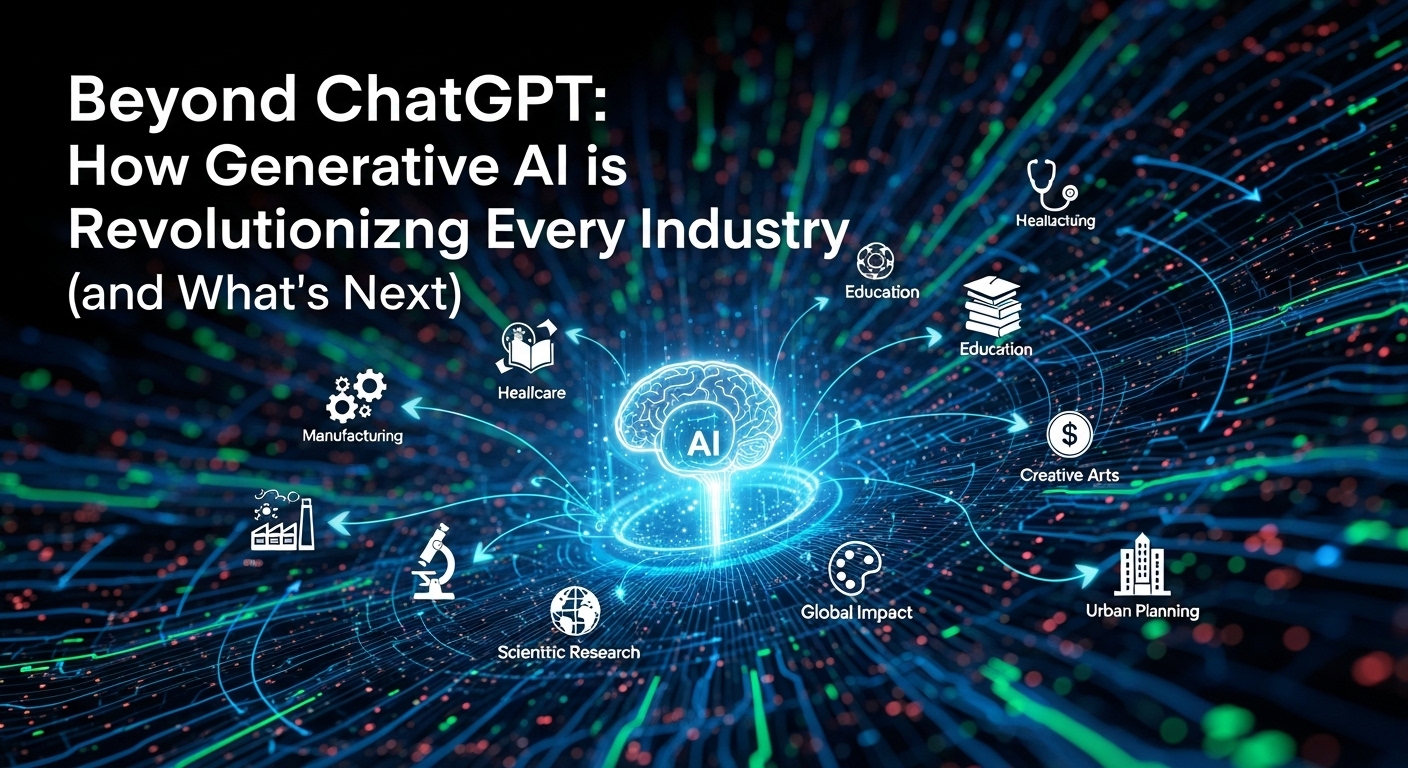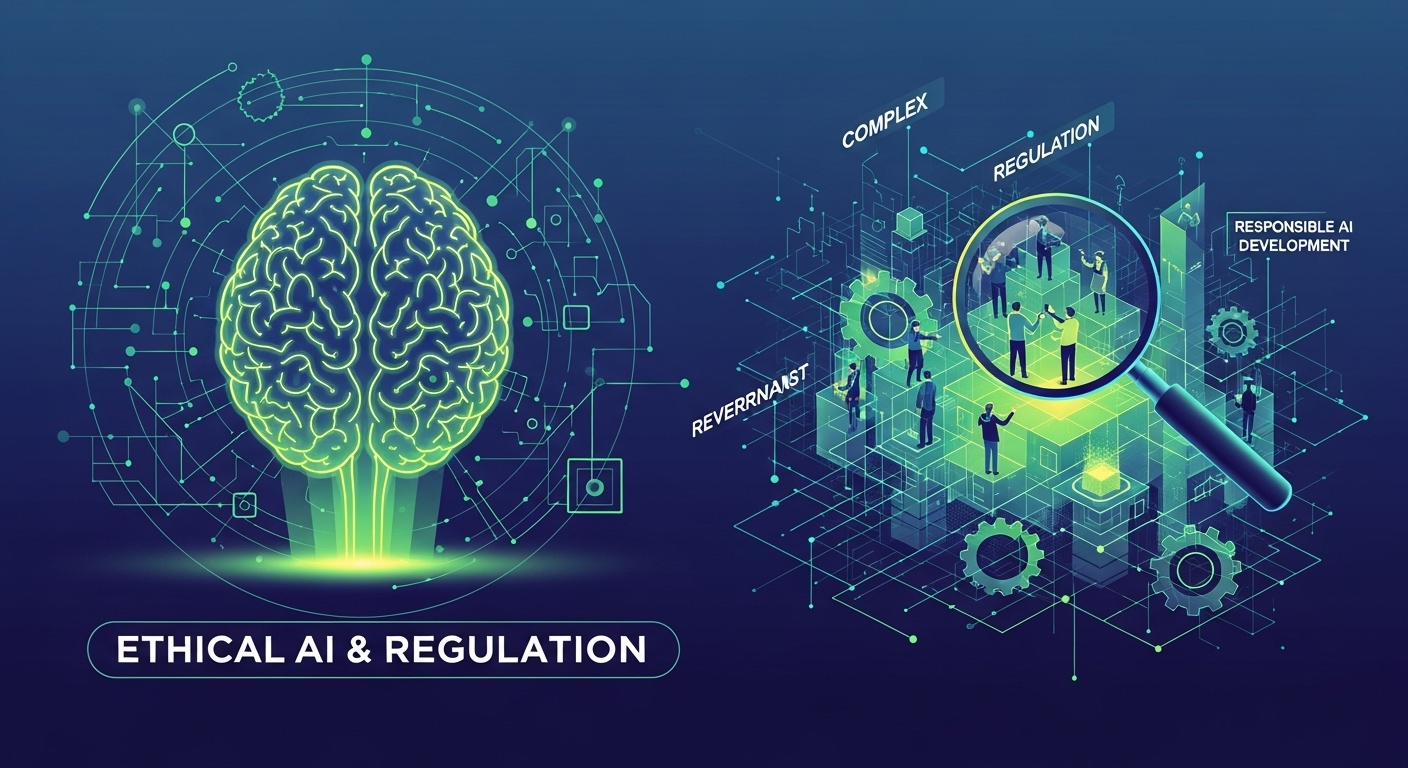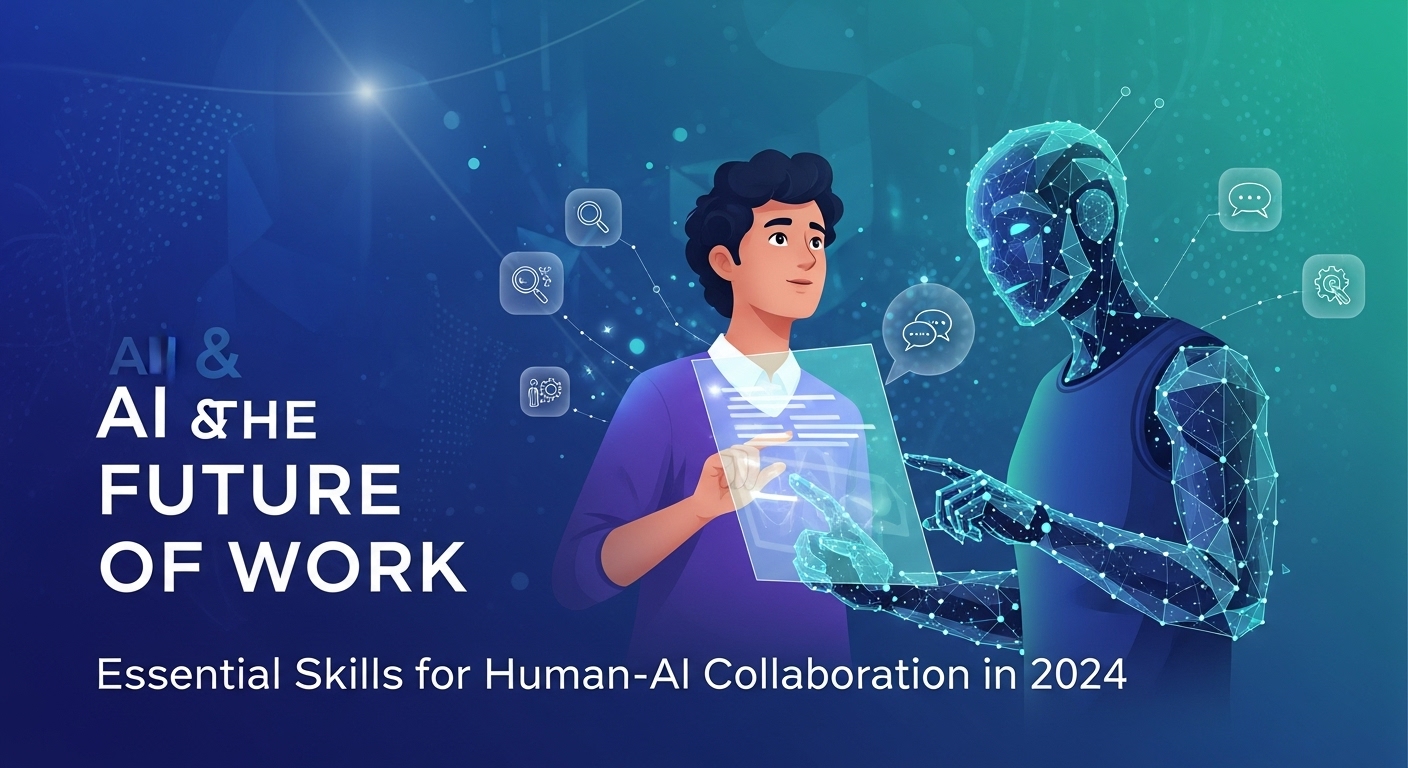The World After ChatGPT: A New Technological Dawn
It’s almost impossible to have missed the seismic shockwave that ChatGPT sent across the globe. Suddenly, a chatbot could write poetry, debug code, and draft emails with startlingly human-like fluency. But to focus solely on ChatGPT is like looking at a single, brilliant star and missing the entire galaxy. ChatGPT is not the destination; it’s the gateway. We are standing at the precipice of a much broader, more profound transformation powered by generative artificial intelligence. This technology is quietly, and sometimes not so quietly, infiltrating every corner of our world, reshaping industries from the ground up. This isn’t just another incremental update; it’s a fundamental shift, a new industrial revolution. Let’s explore how this revolution is unfolding and what the future holds.
What Exactly is Generative AI?
Before we dive into its applications, let’s demystify the term. At its core, generative AI refers to artificial intelligence models that can create new, original content rather than just analyzing or classifying existing data. Think of it as a creative partner. While traditional AI might identify a cat in a photo, generative AI can create a brand-new image of a cat wearing a spacesuit, riding a unicorn. This creative capability stems from being trained on vast datasets of text, images, code, or sounds. The models, often called Large Language Models (LLMs) like GPT-4, learn the underlying patterns and structures of this data so well that they can generate novel outputs that are statistically similar yet entirely unique.
From Text to a Tapestry of Creation
The magic of generative AI isn’t confined to text. We’re seeing an explosion of models with different specialties:
- Image Generation: Tools like Midjourney, DALL-E 3, and Stable Diffusion can turn a simple text prompt into a breathtaking piece of art, a photorealistic image, or a complex diagram.
- Code Generation: Platforms such as GitHub Copilot act as an AI pair programmer, suggesting lines of code, entire functions, and even helping to identify bugs, dramatically accelerating the development process.
- Audio and Music Generation: AI can now compose original musical scores in any genre, create realistic voiceovers, or generate sound effects for films and games.
- Video Generation: While still in its nascent stages, tools like Sora and RunwayML are showing the incredible potential of generating short video clips from text descriptions, promising to revolutionize filmmaking and content creation.
The Industrial Revolution 2.0: AI’s Impact Across Sectors
The true power of generative AI is its versatility. It’s a general-purpose technology, much like electricity or the internet, that is being adapted to solve specific problems across a multitude of fields. Here’s a look at how it’s making its mark.
Healthcare and Life Sciences
Generative AI is poised to save lives and accelerate medical breakthroughs. In drug discovery, AI models can simulate molecular interactions and design novel protein structures, drastically shortening the years-long process of developing new medicines. For clinicians, it can analyze medical images like X-rays and MRIs to spot anomalies the human eye might miss. It can also generate synthetic patient data for training medical students and other AI models without compromising real patient privacy. Furthermore, it’s personalizing medicine by creating tailored treatment plans based on an individual’s genetic makeup and lifestyle.
Finance and Banking
The financial world runs on data, and generative AI is the ultimate data interpreter and creator. It’s being used to generate sophisticated market analysis reports, summarizing complex financial data in seconds. Algorithmic trading models are becoming more predictive, and AI-powered chatbots are offering personalized financial advice to customers 24/7. In the realm of security, generative AI can create complex simulations to identify weaknesses in fraud detection systems, making our financial ecosystem more secure.
Creative Arts and Entertainment
This is perhaps the most visible area of disruption. Artists are using AI as a new kind of paintbrush, collaborating with models to create stunning visual works. Musicians are experimenting with AI-generated melodies and harmonies. In Hollywood, AI is assisting with scriptwriting, storyboarding, and creating mind-blowing visual effects that were once prohibitively expensive. It’s not about replacing human creativity but augmenting it, opening up new avenues for artistic expression.
Software Development and IT
For developers, generative AI is a game-changer. Code assistants are not just auto-completing code; they’re explaining complex algorithms, translating code between different programming languages, and automating the tedious process of writing documentation and unit tests. This frees up developers to focus on higher-level problem-solving and architectural design, boosting productivity and innovation across the entire tech industry.
Marketing and E-commerce
Personalization is the holy grail of marketing, and generative AI delivers it at scale. It can craft thousands of unique versions of ad copy, email subject lines, and product descriptions tailored to different customer segments. It generates compelling visuals for social media campaigns and can even create personalized shopping experiences, acting as a virtual stylist or product advisor, leading to higher engagement and conversion rates.
Navigating the New Frontier: Challenges and Ethics
Like any powerful technology, the rise of generative AI is not without its challenges. The data used to train these models can contain inherent biases, which the AI can then perpetuate or even amplify. The potential for misuse, from creating sophisticated phishing scams to generating widespread misinformation and deepfakes, is a significant concern. Furthermore, the conversation around job displacement is unavoidable. While many repetitive tasks will be automated, this also paves the way for new roles focused on managing, directing, and collaborating with AI systems. Navigating this transition responsibly is one of the key challenges of our time.
What’s Next? The Future of AI & Tech Trends
The pace of innovation is staggering, and what we see today is just the beginning. The next wave of AI & tech trends points towards even more integrated and capable systems.
Multimodal AI
The future is multimodal. This means single AI models will be able to seamlessly understand, process, and generate content across different formats—text, images, audio, and video. You could show an AI a video of your refrigerator’s contents and ask it to generate a recipe, a shopping list, and a short cooking tutorial video. This holistic understanding will make AI interactions far more natural and powerful.
Autonomous Agents
We are moving from AI as a tool to AI as an agent. These autonomous systems will be able to take a high-level goal—like ‘plan a vacation to Italy’—and independently perform all the necessary sub-tasks: researching flights, booking hotels, creating an itinerary, and making restaurant reservations. They will act as our personal assistants, executing complex workflows on our behalf.
Conclusion: Your Role in the Generative AI Revolution
We are living through a pivotal moment in technological history. Generative AI is more than just a clever chatbot; it’s a foundational technology that is unlocking new efficiencies, fueling creativity, and solving problems once thought unsolvable. The revolution is already here, and its momentum is only growing. The key is not to fear this change but to engage with it. For individuals, this means embracing lifelong learning and developing skills in critical thinking and AI collaboration. For businesses, it means strategically integrating these tools to innovate and stay competitive. The question is no longer *if* generative AI will change your industry, but *how* you will be a part of that change. The future is being generated right now—are you ready to help write the prompt?


